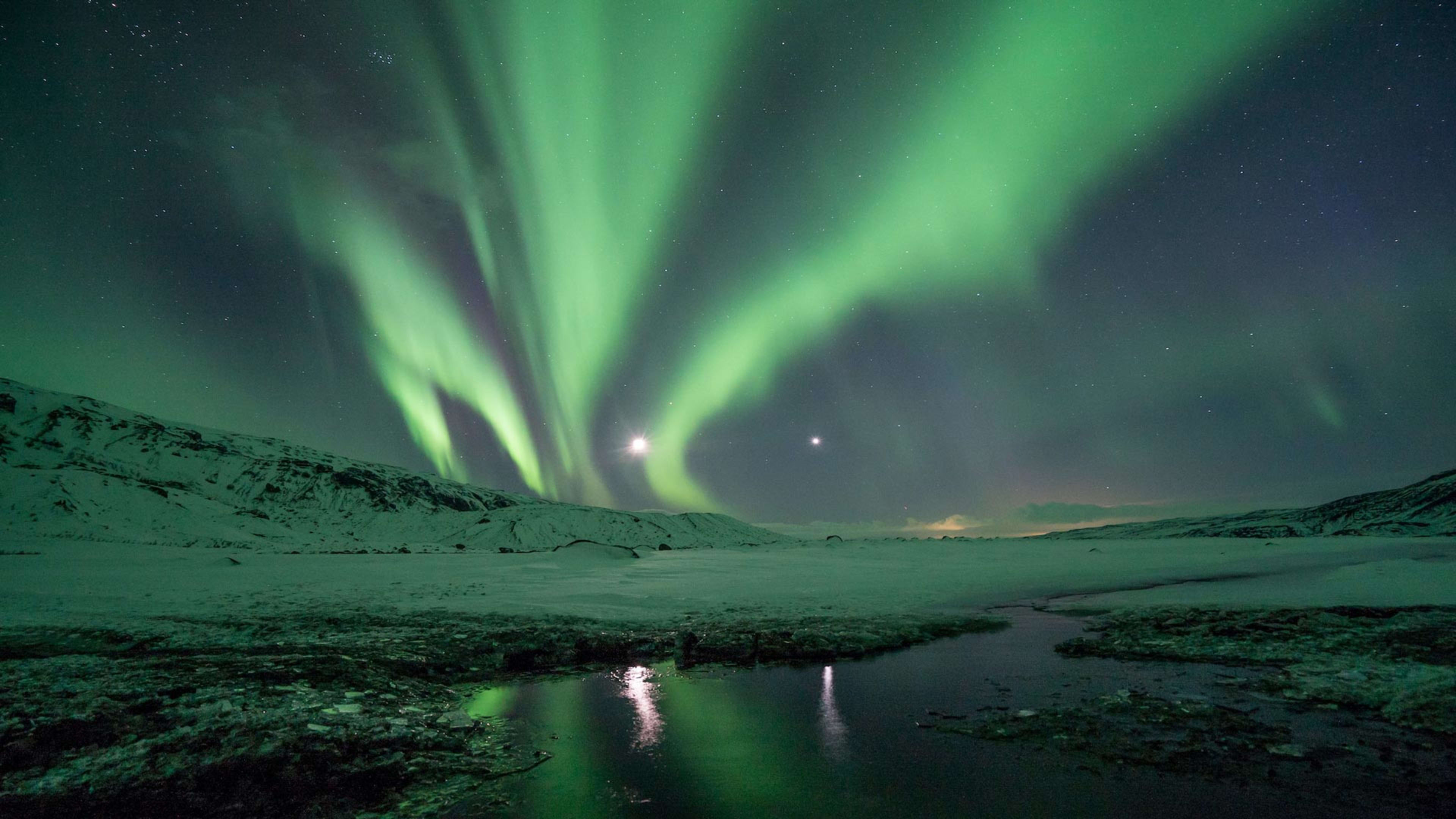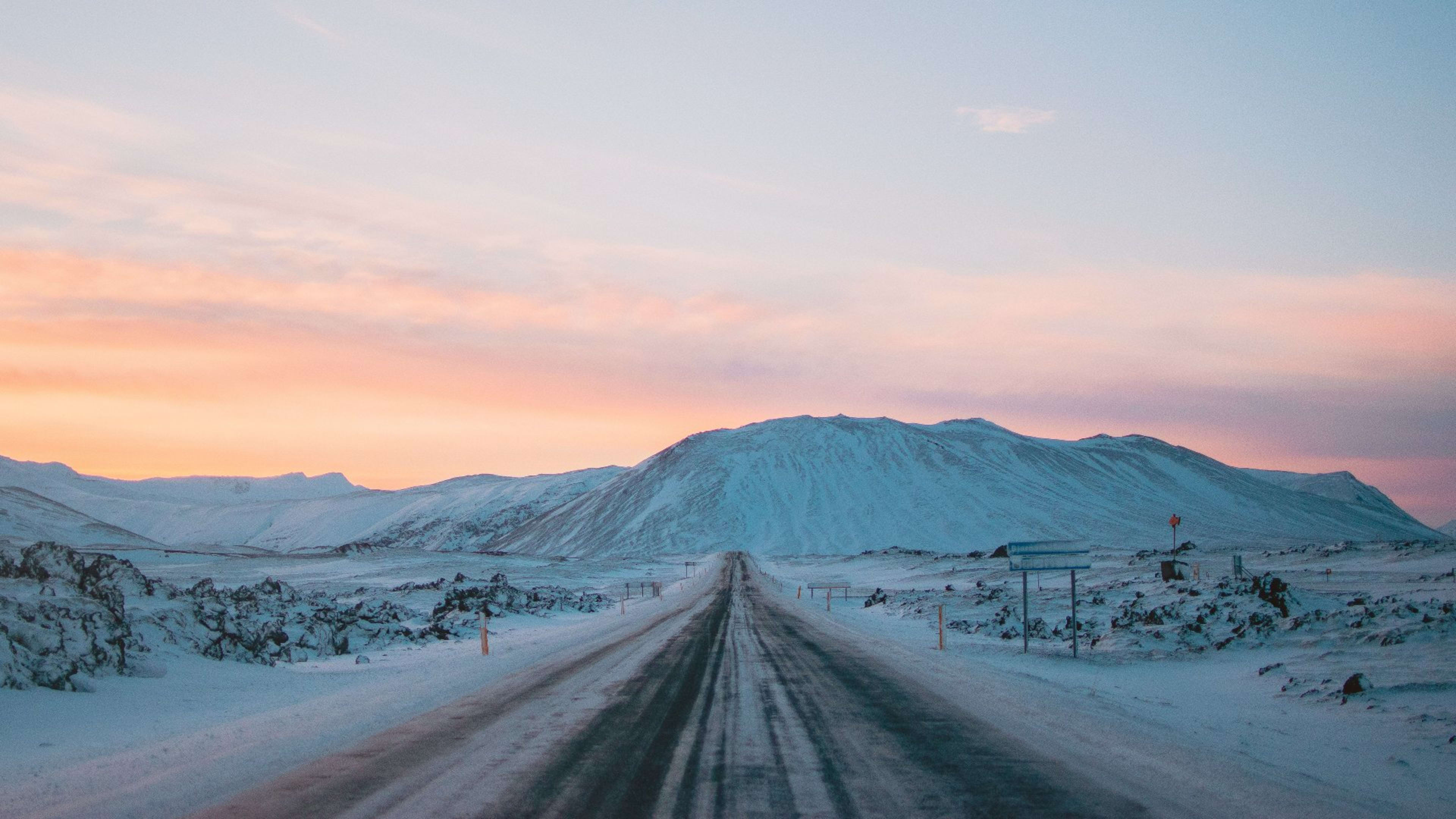Looking for the best things to do in Iceland in November? Read on for all our tips and inspiration for your November adventure to Iceland.
Visiting Iceland in November gives you the chance to check the country out in wintertime before it gets too cold. You’ve also got a great chance of seeing the Northern Lights.
What’s more, November is a pretty good time to go if you want a slice of Icelandic culture. The Iceland Airwaves music festival at the start of November brings an awesome buzz upon Reykjavík. If you love gigs, it’d be a sin to miss it!
Is it worth going to Iceland in November?
Absolutely! November is a fantastic time of year to visit Iceland for a whole bunch of reasons.
First up, the Northern Lights. The magical Aurora are only visible in the darkness of the winter months. November’s shorter daylight hours give you plenty of time to chase down the lights.
- Check out these Northern Lights tours of Iceland.
- Blog: Northern Lights in Iceland – All about Aurora Borealis.
Toward the end of November, Icelanders start getting ready for Christmas. So you’ll see the festive lights going up around towns and villages and maybe a little bit of the magic will rub off on you!
November also brings a decent chance of snow, adding to the whole festive vibe.
Need more reasons to visit Iceland in November? Here’s 5:
- No summer rush, and you’re in before the popular Christmas season
- Plenty of chances to spot the Northern Lights
- A cozy winter feel with festive lights and decorations starting to appear
- Iceland’s ice cave tours are running and the glaciers are looking their best
- The biggy: the Iceland Airwaves music festival
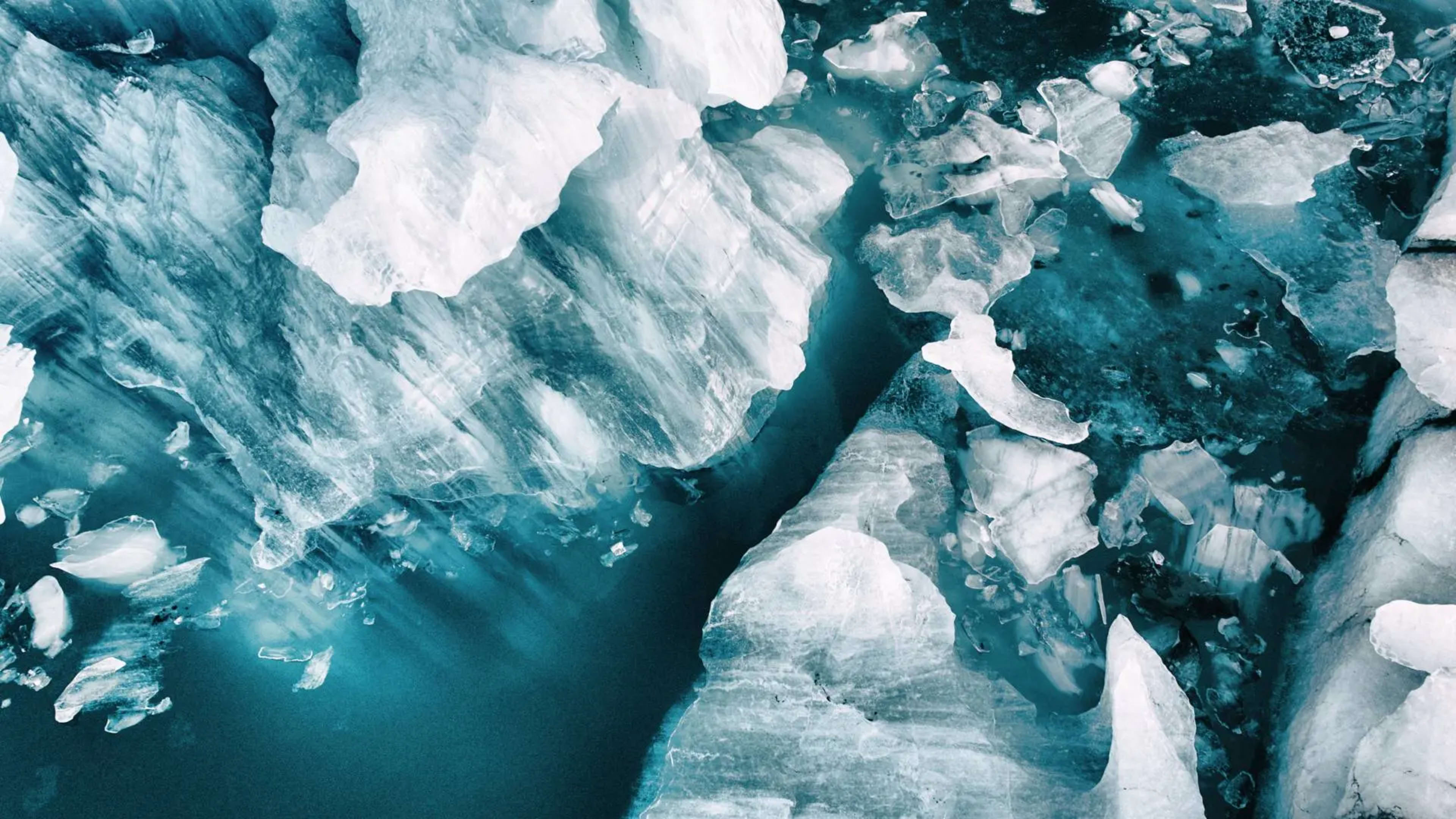
Best things to see and do in Iceland in November
There’s plenty of stuff to do in November in Iceland, both out in the countryside and in Reykjavík. At this time of year, you’re likely to experience:
- Snow-capped mountains
- Waterfalls covered in dangling icicles
- Magnificent ice caves hidden under glaciers
- Geysers erupting, with the steam turning into ice
The country is still accessible, with major roads being cleared regularly. November isn’t too cold either by Icelandic standards: the deep chill doesn’t set in until the new year. (More about the weather in Iceland below.)
This means it’s still possible to drive the Ring Road and see the country in its winter costume. That said, you’ll want to have some indoor activities lined up too, just in case the weather isn’t in your favor.
- See Iceland in November on a winter self-drive tour.
- Find out how many days to spend in Iceland in winter.
In November, you can:
- See Arctic foxes in their white winter coats
- Visit Þingvellir National Park and see frosted gorges and waterfalls
- Do a classic Golden Circle tour and see a live geyser erupt
- Chase the Northern Lights in the dark evenings
- Sample Icelandic delicacies such as lamb and fresh fish
- Stew in the naturally heated hot tubs with snowflakes falling on your face
- Go lava caving in West Iceland
- Join a whale-watching boat tour from Reykjavík or Húsavík
- Discover the world of Icelandic music at the Iceland Airwaves festival
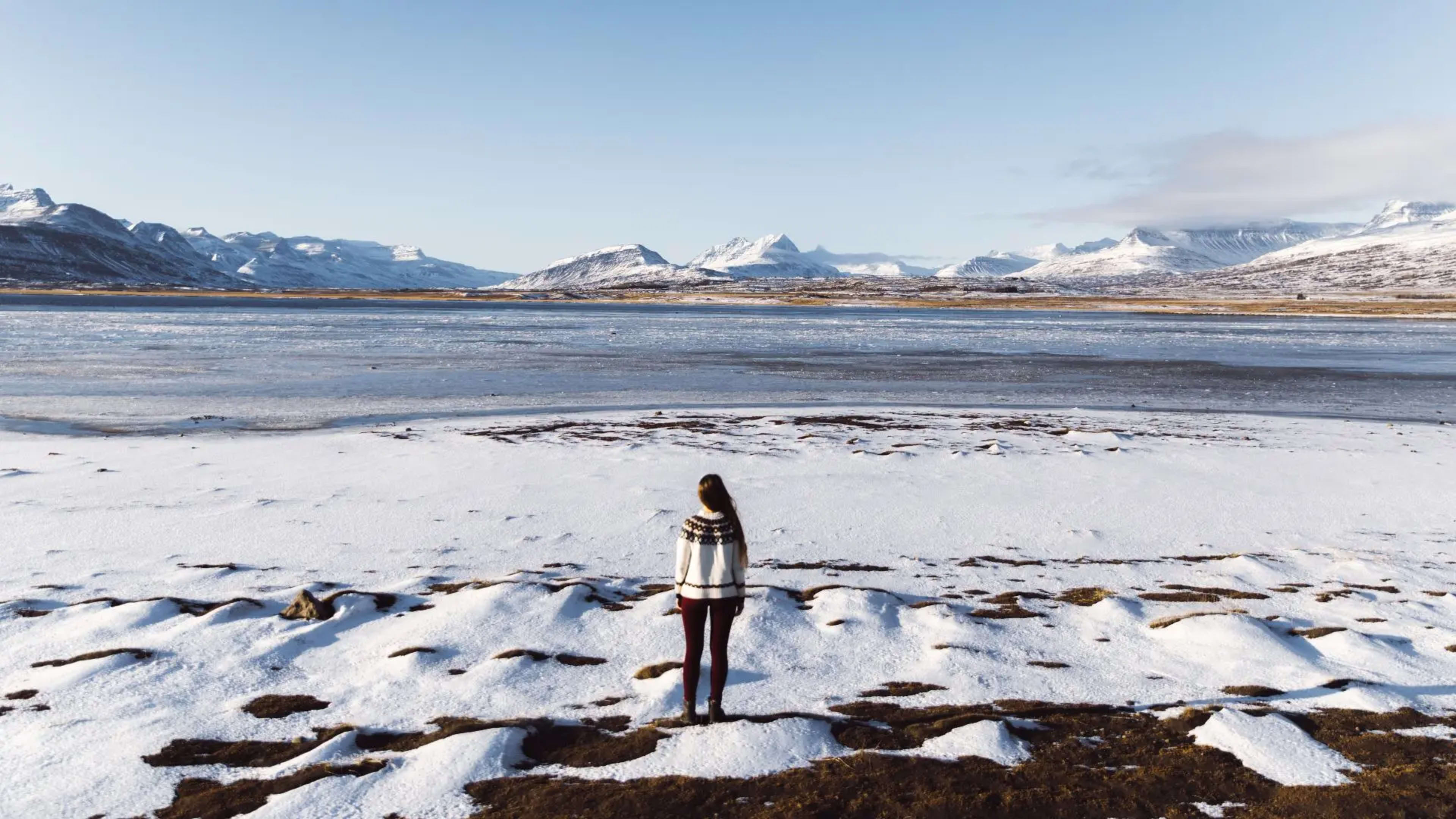
Events in Iceland in November
One of Iceland’s biggest cultural events – the Iceland Airwaves music festival – dominates the November calendar.
Iceland Airwaves music festival
For a country of 350,000 people, Iceland has a pretty big music scene. A fair few Icelandic acts have made it big on the world stage, including Björk, Sigur Rós, and Of Monsters and Men.
Icelanders are a pretty creative bunch. The large number of bands is probably down to the fact that many Icelandic people moonlight as singers and musicians.
Once you know this, it seems logical that Iceland should be host to big music festivals!
- Amp up your Icelandic music knowledge with our culture guide.
By far the biggest and most international is Iceland Airwaves. Normally held every year in November, the festival attracts both Icelandic acts and international names like Fatboy Slim and Santigold.
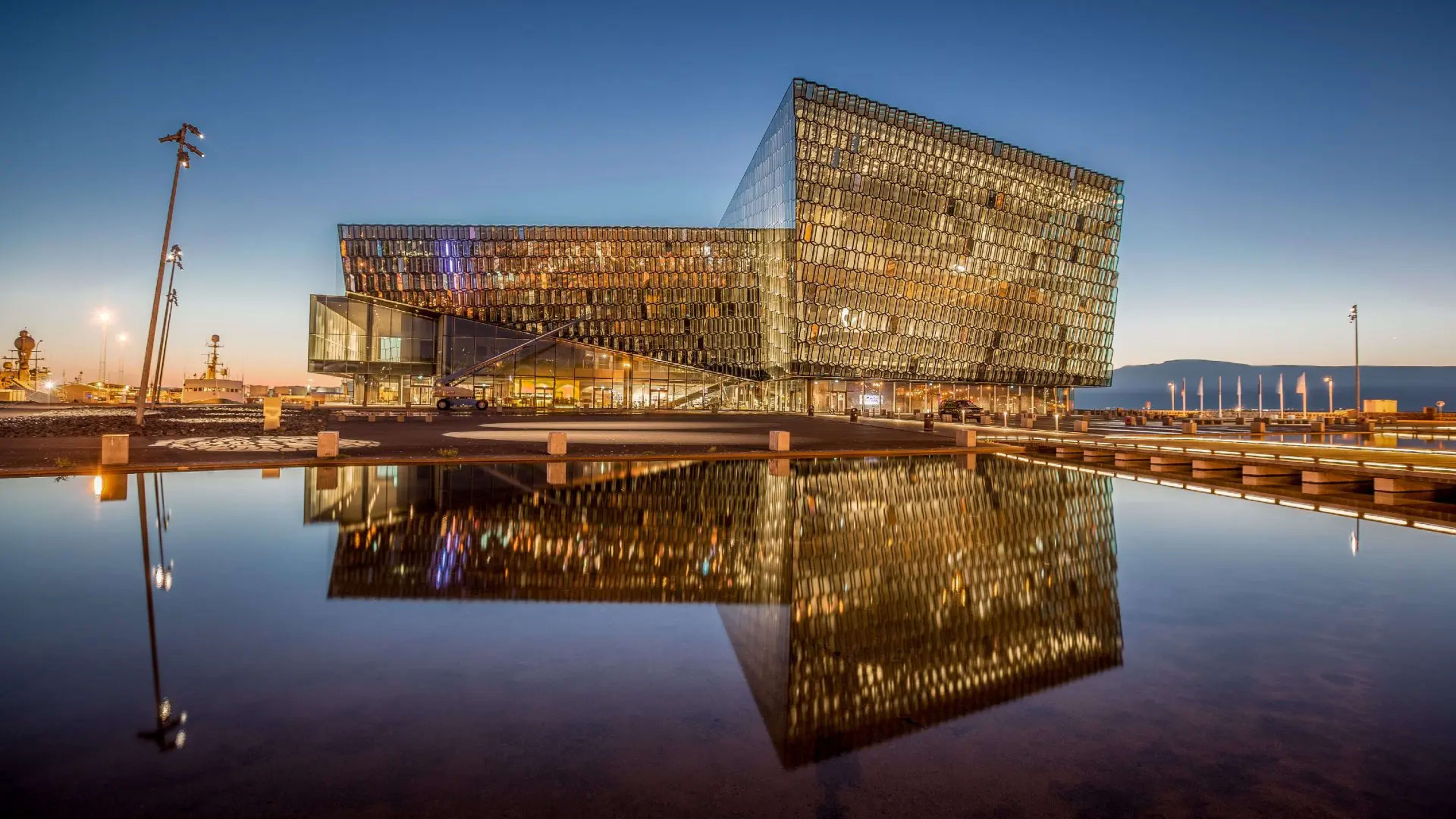
Airwaves takes place in Reykjavík and is spread across venues all over the city center, including the epic Harpa concert hall. There’s also a whole load of “off-venue” gigs, meaning you can see Icelandic acts even if you didn’t manage to nail tickets for the main festival.
What better way to discover the Icelandic music scene than at Airwaves? You can dip in and out of gigs as you please – if you’re not loving what you hear, then simply roll on down to the next venue and try something else.
Icelandic Language Day
On 17 November, Icelanders celebrate Icelandic Language Day. The Icelandic language is one of the cornerstones of Icelandic culture. Locals are encouraged to use the language with each other and visitors too.
Why not learn a few phrases and try them out with Icelanders? They’ll definitely appreciate the effort!
Here are a few that might come in handy:
Another tip: you might see a couple of unusual Icelandic letters on your trip around the country:
- Ð ð (called “eth”) – pronounced like ‘th’ in the
- Þ þ (called “thorn”) – pronounced like ‘th’ in think
- Æ æ – pronounced like ‘i’ in time
- Ö ö – pronounced like ‘u’ in fur
Best places to visit in Iceland in November
1. Þingvellir National Park
Location: Southwest Iceland, about 1 hour’s drive from Reykjavík.
Why visit? Þingvellir is a magical place at any time of year, but in November as the Icelandic winter is starting to bed in, it can feel supernatural. Þingvellir (pronounced Thing-vet-lir) was the meeting place of Iceland’s ancient Viking parliament.
Once a year, Icelanders would gather from all over the country to trade, settle disputes, and generally have a good time.
Farmers would set up stalls and sell their produce, and the Lögsögumaður (“Lawspeaker”) would hear cases and make rulings. Back then, the law wasn’t even written down, the Lögsögumaður just recited it aloud from memory at Lögberg (the “Law Rock”).
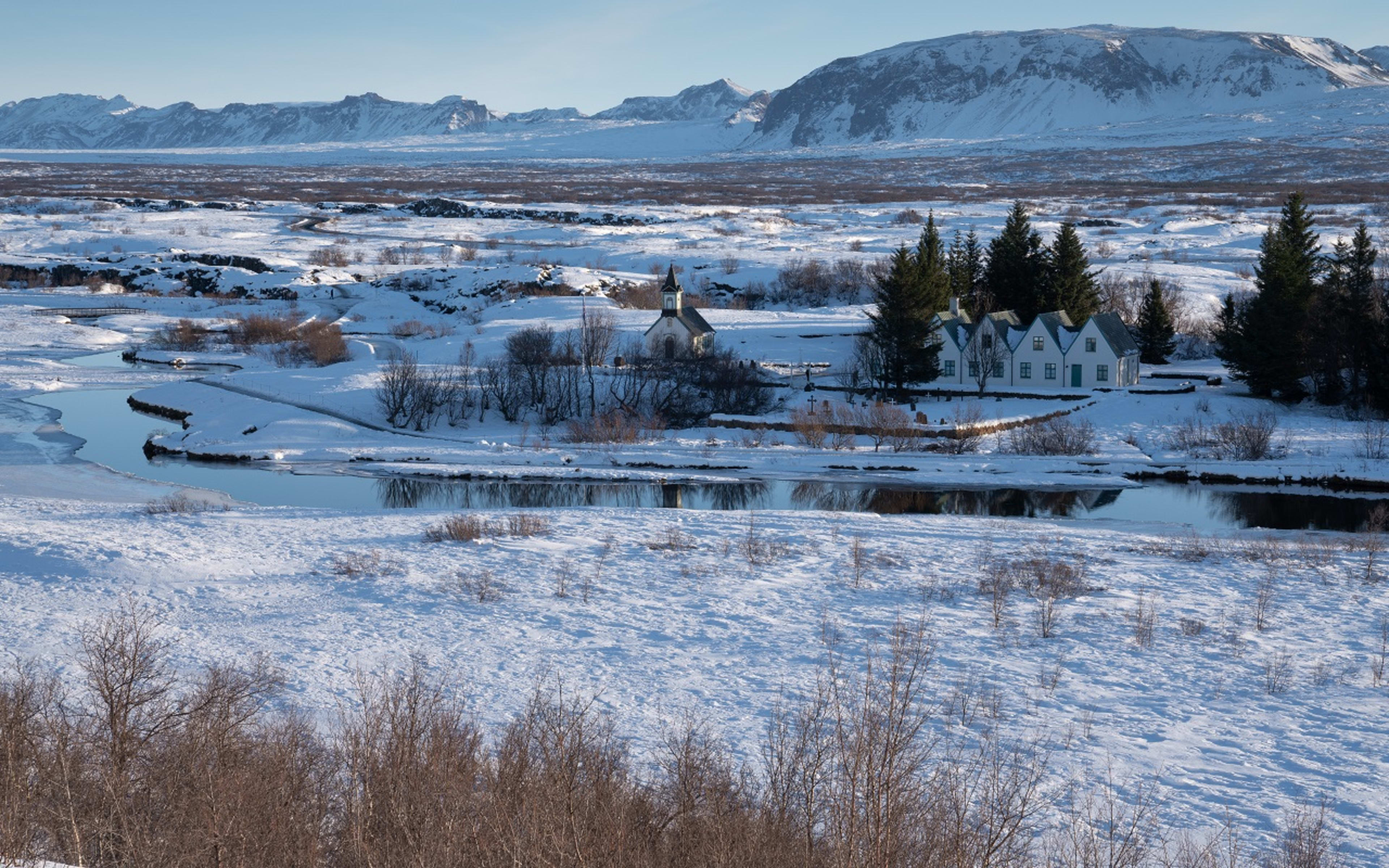
Don’t miss: Gorges made of solidified lava, and the valley where the North American and Eurasian tectonic plates meet. Also: the pool where witches were drowned before being thrown over a waterfall. Why did they do it? Just cause, you know, Vikings.
2. Reykjavík
Location: Southwest Iceland.
Why visit? Reykjavík is Iceland’s only true city, and although it’s small by global standards, it packs in a lot. Of course, this is where Iceland Airwaves happens, so if you want to check out the festival, you’ll have to stop in town!
There’s all kinds of other culture too, including plenty of museums and galleries. And Reykjavík is home to Iceland’s best restaurants, serving modern Icelandic cuisine.
Reykjavík is also known for its awesome nightlife. Around Airwaves, people like to party hard, so if that’s your scene, you’re in luck!
Don’t miss: The city’s bars and clubs. And then a dip in the swimming pool the next day to see off your hangover.
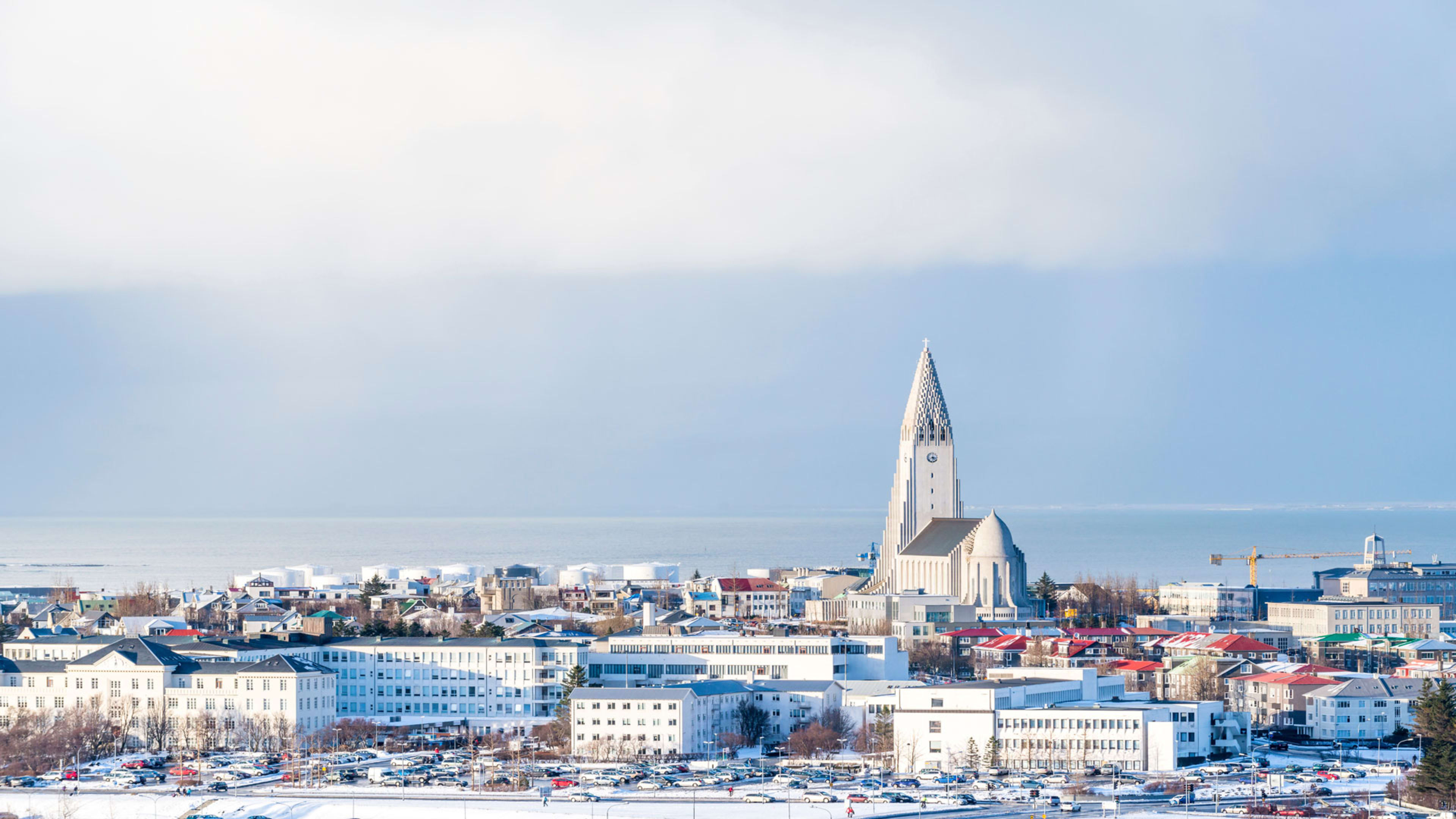
3. Vatnajökull National Park
Location: Southeast Iceland.
Why visit? At this time of year, Vatnajökull National Park and the surrounding area turn into a winter paradise. Vatnajökull is the largest glacier in Europe and it looms large over this part of the country.
This area is also fantastic for ice caving. With Iceland’s ice caves only just opening up in November, it’s the first chance you have to see these wonders in the winter.
- Explore these Iceland adventure packages that include ice cave trips.
Don’t miss: Jökulsárlón glacier lagoon on the south coast, where you can see baby icebergs drift by.
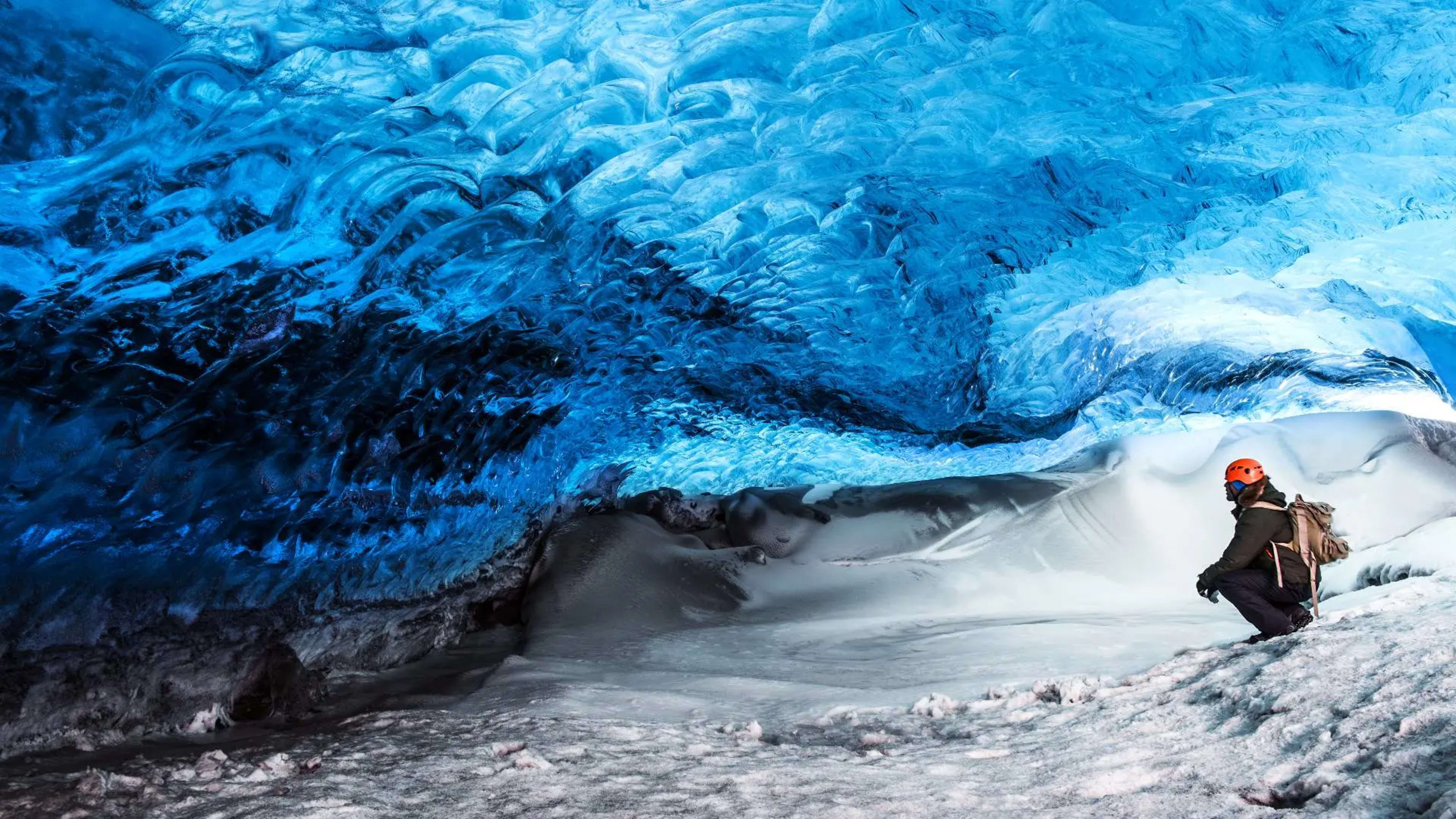
4. Hveragerði and the Reykjadalur warm river
Location: South Iceland, between Reykjavík and the town of Selfoss.
Why visit? Hveragerði is known for its geothermal energy and there are tons of natural hot springs in the area. It’s the center of flower cultivation in Iceland, which you can see in the town’s many greenhouses.
The warm Reykjadalur river is a short hike from Hveragerði. The river is naturally warm all year round and the perfect temperature for bathing. Lying in the warm water – under the stars, with the snow falling on your face – is a magical experience.
Don’t miss: The local hverabrauð or “hot spring bread”. This variant of Icelandic rye bread is baked directly in the ground using geothermal energy!
5. Reykholt valley and Deildartunguhver hot springs
Location: West Iceland, near the Snæfellsnes peninsula.
Why visit? The awesome thing about hot springs is that they’re hot all year round. And actually, we think winter is the best time to see them, as the contrast between hot and cold makes for magic steam clouds.
The surrounding area is also great for lava caving. The Víðgelmir and Surtshellir caves are a few minutes’ drive from the hot spring. Then there are the jaw-dropping Barnafoss and Hraunfossar waterfalls, which might even be frozen at this time of year.
Don’t miss: A dip in the hot tubs at Krauma geothermal spa.
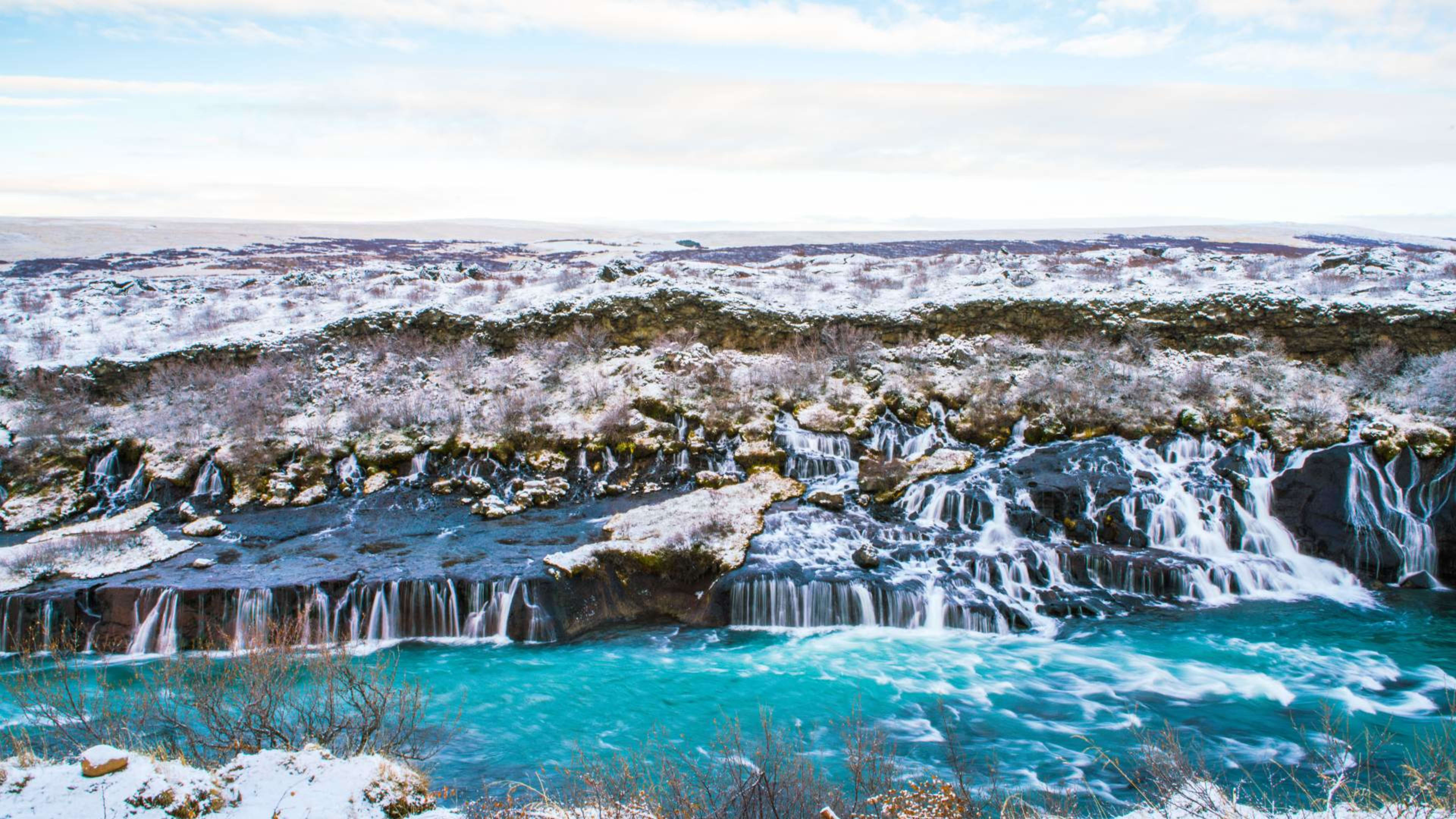
What’s the weather like in Iceland in November?
November is near the start of the Icelandic winter, so temperatures are still quite mild (for Iceland anyway). The average high maxes out at 5°C (41°F), with average lows of 0°C (32°F).
As winter is underway by November, there can be chilly winds, cold rains, and even snow. Come prepared with a warm winter coat and plenty of extra layers.
And don’t forget your wooly hat, scarf, and gloves. (A baseball cap is not a good idea at this time of year.)
Does it snow in Iceland in November?
The chances of snow in Iceland increase pretty sharply across the month of November. This is especially the case in the countryside.
At the start of November, the average snowfall in Reykjavík is 39 mm (1.5 inches), but by the end of the month, the average is 113 mm (4.5 inches). So the later you go, the better your chance of seeing some snow!
Is it safe to drive in Iceland in November?
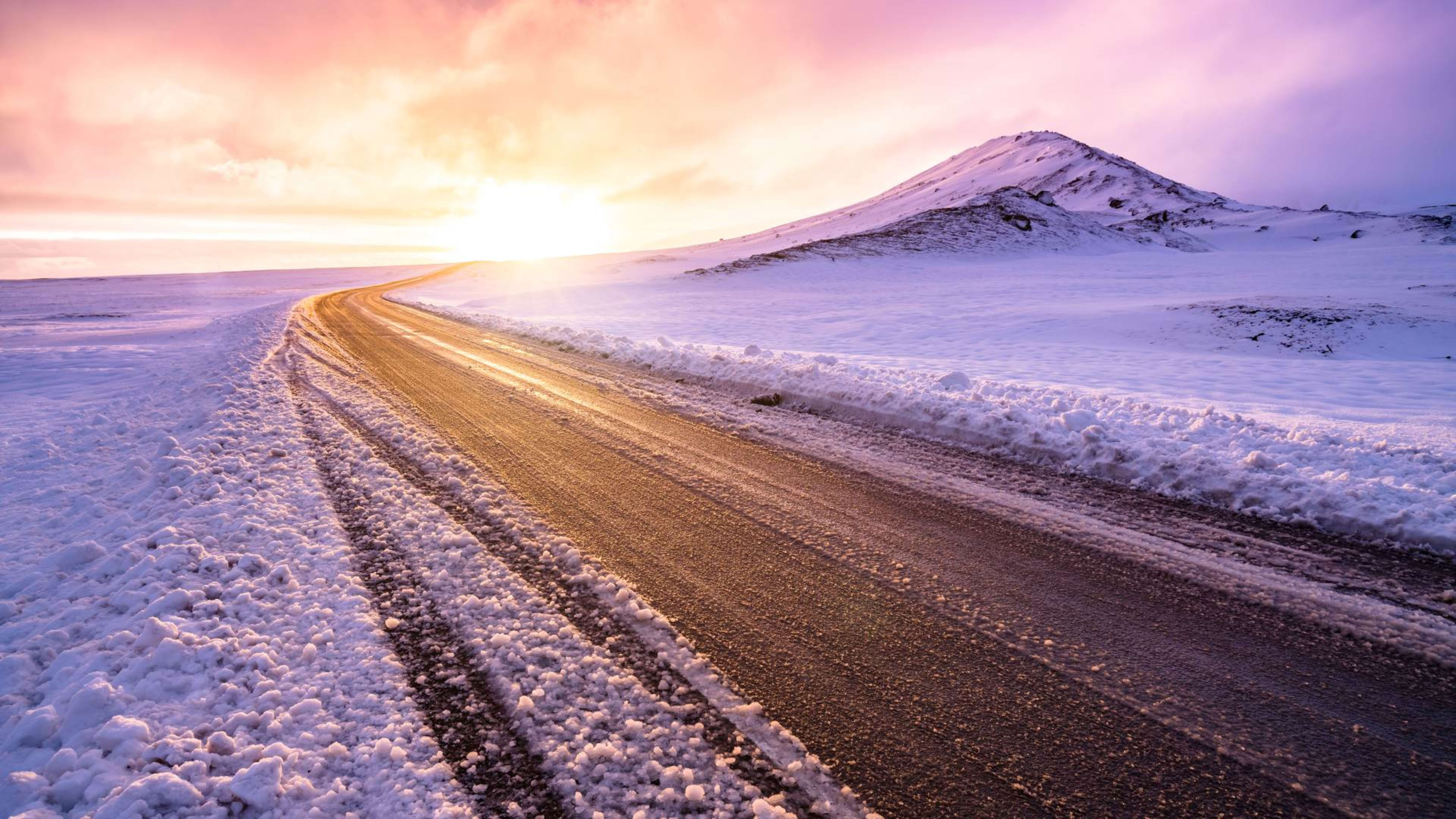
In Iceland, November is the month when winter weather starts to set in. So you can expect some snow and frost on the roads.
That said, after significant snowfall, all the main roads including Route 1 (the Ring Road) are regularly cleared. Also, if you’ve rented a car, you can rest assured that it will be equipped with winter tires for extra grip.
- Check out these Iceland Ring Road itineraries.
- Blog: Our ultimate guide to car rental in Iceland.
Still, Icelandic driving conditions might be different from what you’re used to back home.
If you don’t feel comfortable driving in Iceland in winter, you can join a multi-day tour from Reykjavík, with multiple excursions by bus. Or if you want to get to know fellow traveler , you could join a guided group tour.
How many hours of daylight are there in Iceland in November?
In November, the days continue to get shorter, meaning you have fewer daylight hours than in the months before. That said, you can still get a decent 5–8 hours of daylight.
At the start of November, sunrise is at around 9:10 a.m. and sunset around 5:10 p.m. By the end of November, the sun doesn’t rise until 10:45 a.m. and is down again by 3:45 p.m.
Shorter daylight hours do have one big benefit though: more chances to chase the Northern Lights. They’re only visible in the dark, so more night is a good thing!
Can I see the Northern Lights in Iceland in November?
Yes! The shorter days are definitely your friend here.
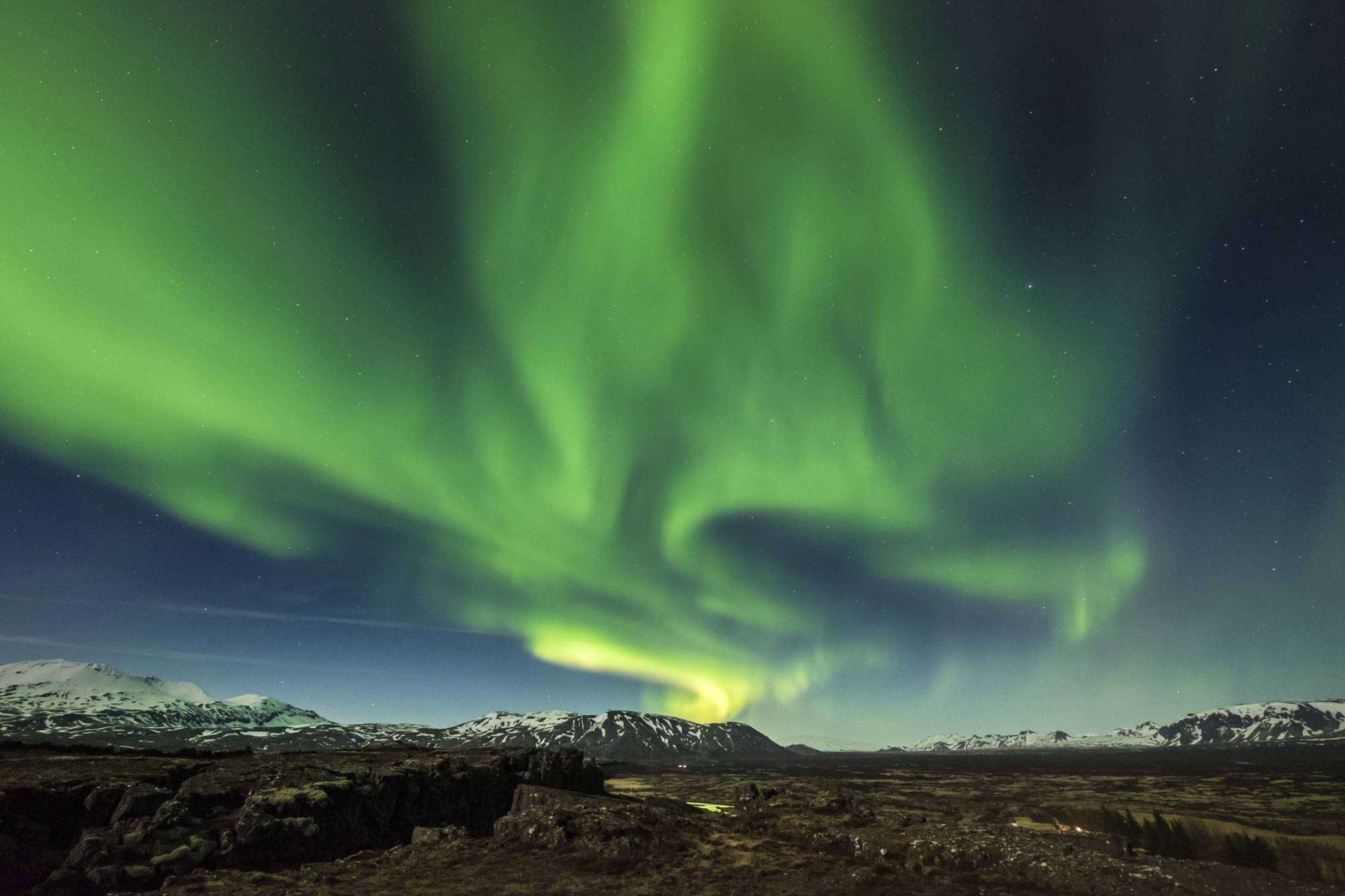
November is a great time to visit Iceland if spotting the Northern Lights is top of your list. Whilst the Aurora themselves aren’t seasonal, the hours of daylight and weather conditions at this time of year work in your favor.
That said, the Northern Lights are a natural beast that can’t be predicted, so we can’t guarantee you’ll see them. By visiting at a darker time of year, your chances are much higher.
And if you’re lucky enough to see them, it’s truly the experience of a lifetime!
What to wear and what to pack for a trip to Iceland in November?
Winter is well and truly underway in November. So you should expect there to be a chill in the air, especially at night. If you’re planning on outdoor activities like Northern Lights excursions or ice caving, then bringing warm layers is super important.
Here’s a list of things not to forget for your Iceland trip:
- Wool sweaters or fleeces
- Thermal jacket with waterproof outer layer
- Waterproof overtrousers
- Gloves, scarf, and woolen hat
- Trusty hiking boots and thick, warm socks
- Warm underwear, like long johns
- Swimsuit and towel for pools and natural hot springs
Find out more about how to pack for an Iceland winter trip with our packing guide.
Planning your trip to Iceland in November
Where should you start when it comes to actually planning your November trip to Iceland? Our advice is to pick the places you want to see and activities you want to do, and build your itinerary around that.
Iceland Tours offers a great choice of winter vacation packages, so you’re bound to find one that brings your dream trip to life. You can go for a self-drive tour. Or if you prefer to skip the driving, a multi-day tour from Reykjavík.
Once you’ve narrowed it down, the only thing left is to decide how long you want your trip to be. Then book online and we’ll take care of the rest.
Your winter adventure in Iceland is just around the corner!


